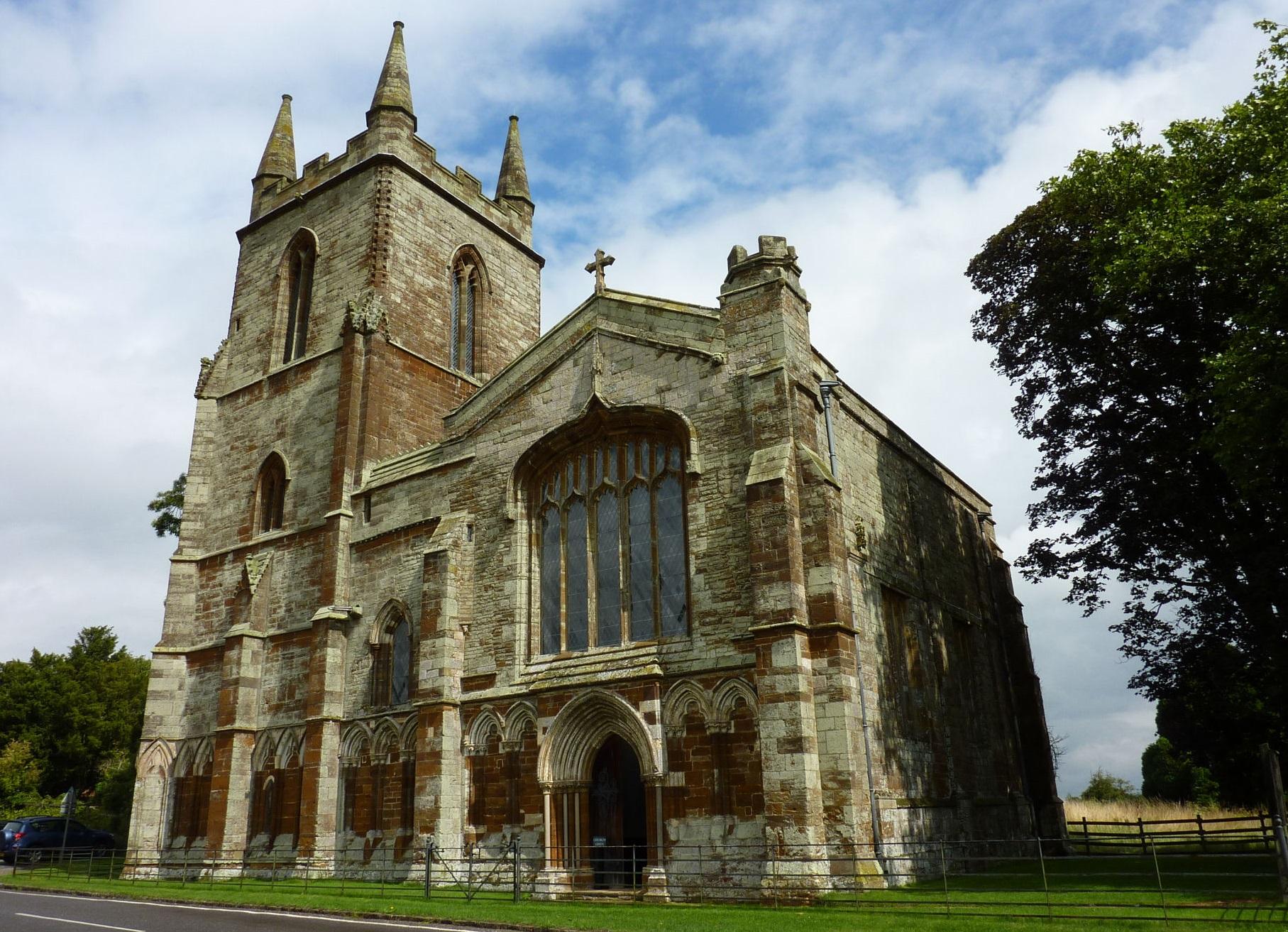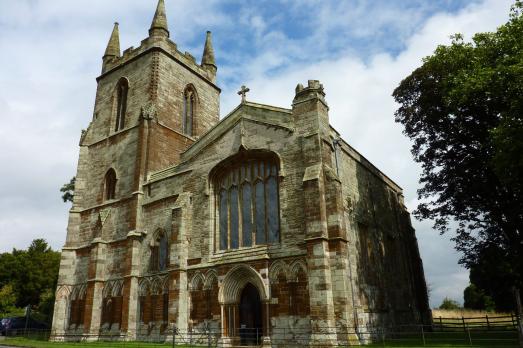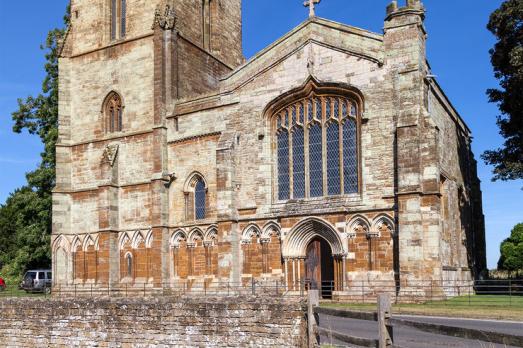St Mary’s has a splendid facade lying adjacent to the large tower that was added in the mid 14th century. Inside, at the base of that tower, is a well laid out museum devoted to the building, which includes a model of the original monastic buildings.
Internally the church is a large barn like space giving a sense of the sheer scale of the medieval original. The nave then was 29 metres long and this was followed by an equally long chancel.
The large windows shed light on the whitewashed walls decorated around the east window with faux curtains held back by putti. This is by Elizabeth Creed around 1710. She was a cousin of the Dryden family who arrived here following the Dissolution of the monastery and who built the adjacent house. In the church their hatchments, armour and two outstanding neo classical white marble tombs, both by Rossi, can be seen.
The poet John Dryden was a cousin of the family and the remains of the archaeologist Sir Henry Dryden lie in the churchyard under a tall Celtic cross. Few churches in the county have such resonance from both Medieval and Georgian times.



